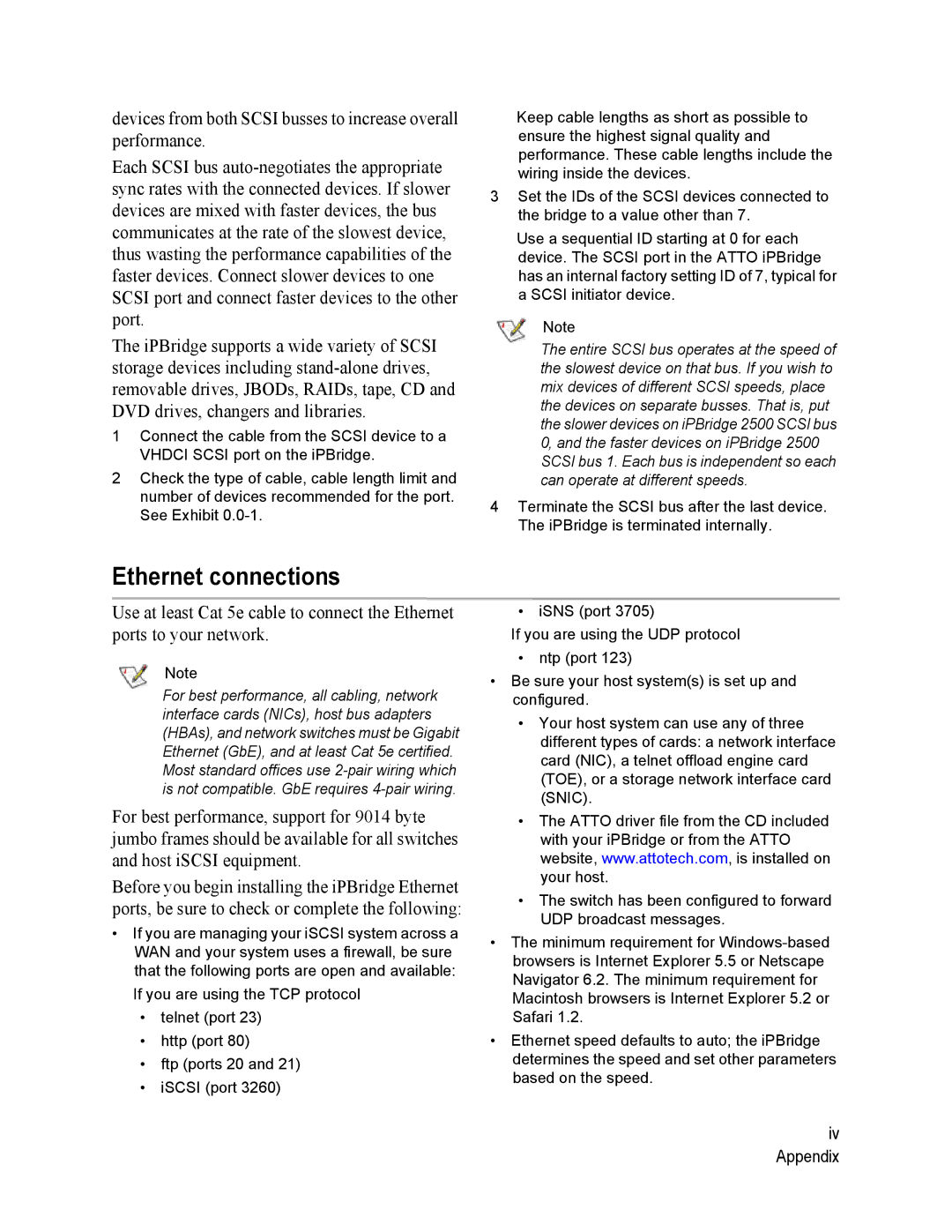
devices from both SCSI busses to increase overall performance.
Each SCSI bus
The iPBridge supports a wide variety of SCSI storage devices including
1Connect the cable from the SCSI device to a VHDCI SCSI port on the iPBridge.
2Check the type of cable, cable length limit and number of devices recommended for the port. See Exhibit
Keep cable lengths as short as possible to ensure the highest signal quality and performance. These cable lengths include the wiring inside the devices.
3Set the IDs of the SCSI devices connected to the bridge to a value other than 7.
Use a sequential ID starting at 0 for each device. The SCSI port in the ATTO iPBridge has an internal factory setting ID of 7, typical for a SCSI initiator device.
Note
The entire SCSI bus operates at the speed of the slowest device on that bus. If you wish to mix devices of different SCSI speeds, place the devices on separate busses. That is, put the slower devices on iPBridge 2500 SCSI bus 0, and the faster devices on iPBridge 2500 SCSI bus 1. Each bus is independent so each can operate at different speeds.
4Terminate the SCSI bus after the last device. The iPBridge is terminated internally.
Ethernet connections
Use at least Cat 5e cable to connect the Ethernet ports to your network.
Note
For best performance, all cabling, network interface cards (NICs), host bus adapters (HBAs), and network switches must be Gigabit Ethernet (GbE), and at least Cat 5e certified. Most standard offices use
For best performance, support for 9014 byte jumbo frames should be available for all switches and host iSCSI equipment.
Before you begin installing the iPBridge Ethernet ports, be sure to check or complete the following:
•If you are managing your iSCSI system across a WAN and your system uses a firewall, be sure that the following ports are open and available: If you are using the TCP protocol
•telnet (port 23)
•http (port 80)
•ftp (ports 20 and 21)
•iSCSI (port 3260)
•iSNS (port 3705)
If you are using the UDP protocol
•ntp (port 123)
•Be sure your host system(s) is set up and configured.
•Your host system can use any of three different types of cards: a network interface card (NIC), a telnet offload engine card (TOE), or a storage network interface card (SNIC).
•The ATTO driver file from the CD included with your iPBridge or from the ATTO website, www.attotech.com, is installed on your host.
•The switch has been configured to forward UDP broadcast messages.
•The minimum requirement for
•Ethernet speed defaults to auto; the iPBridge determines the speed and set other parameters based on the speed.
iv Appendix
